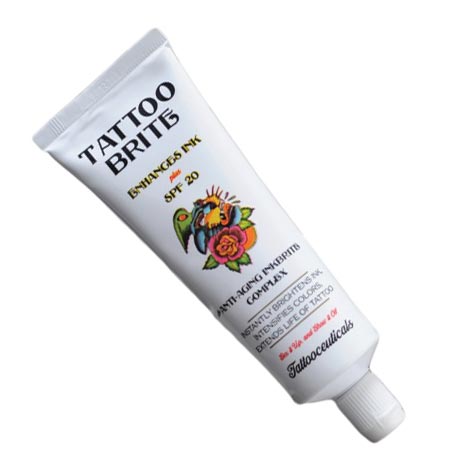Pretty Ricky’s Channels the Spirit of the Lower East Side
From its luminous neon sign to its beer club tasting program, new vitality on an iconic NYC corner

Depending on when (if ever) you’ve passed through the intersection of Rivington and Ludlow, you may have blurry memories of the beloved Spitzer’s Corner or the short-lived Grunhaus. Pretty Ricky’s now occupies this shifting spot—and with the might of Paradise Hospitality Group behind it, one can expect the bar to stick around like other neighborhood legends. The recently formed hospitality group stakes claim to two other new hot spots, Paper Daisy and Mister Paradise, in the nearby East Village. More importantly, their repertoire includes the cocktail bar Drexler’s and neighborhood hang Boulton & Watt—two staples amidst the ever-changing lower Manhattan drinks scene.
Unlike many other bars in the LES, Pretty Ricky’s hopes to keep the vibe mellow. The primary factor regarding this is that they simply have lots of room—from spacious booths and tables in the front to a second bar in the back with large windows and ample seating (that can even handle groups). And then, the food and beverage program sets a new standard for the corner. The 20-tap bar up front stocks a thoughtful selection of beers—several worth seeking out. There’s definitely an emphasis on the beer list, and clever programs like The Pretty Ricky’s Beer Club mean certified members of the Brewers Guild of America will lead ticketed events weekly.

Perhaps expectedly, the cocktail menu includes several well-considered signatures. But it’s the food menu—with hearty Kabocha squash, roasted oysters and more—that references the LES of today, a food destination that’s not afraid to take risks. Partners Darin Rubell and Ryan Gleason, tenured hospitality figures, see Pretty Ricky’s longterm potential. And after several cocktails, a Colt 45 (poured into coupe glasses), a few dishes and some conversation with Rubell and Gleason, we understand why.
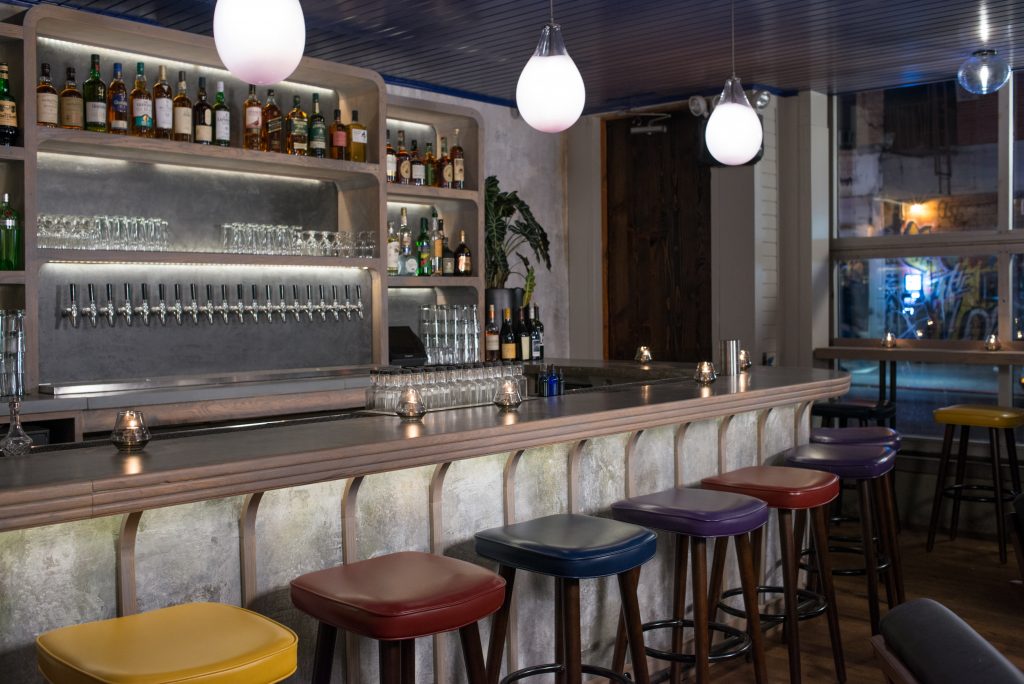
This corner is one of the most trafficked in the LES. What are you doing to get people in your door? And what are you doing to differentiate Pretty Ricky’s from the onslaught of bars in its immediate vicinity?
Darin Rubell: It really starts with our friends and partners at Emporium Design—they’ve been the designers and architects behind all of our projects at Paradise Hospitality, and they have a knack for taking our words, ideas and vision during the brainstorming sessions at the beginning, and helping us realize them. Pretty Ricky’s is a beautiful space, and it doesn’t take people long to notice this. It’s spacious yet intimate at the same time.
We have a sense for what is needed, and for how to be respectful with our approach
While we believe in a simple concept—that good food, good drink, and good people is a recipe for success—it does take more than that. We have more than 30 years of working and living in this neighborhood, so we have a sense for what is needed, and for how to be respectful with our approach. We care greatly about every detail of our spaces—we are relentless with branding, with working on the feel and experience of our establishments. Providing a welcoming, comfortable, and quality experience for the neighborhood at large is essential to us, and I believe it comes through in every interaction guests have.
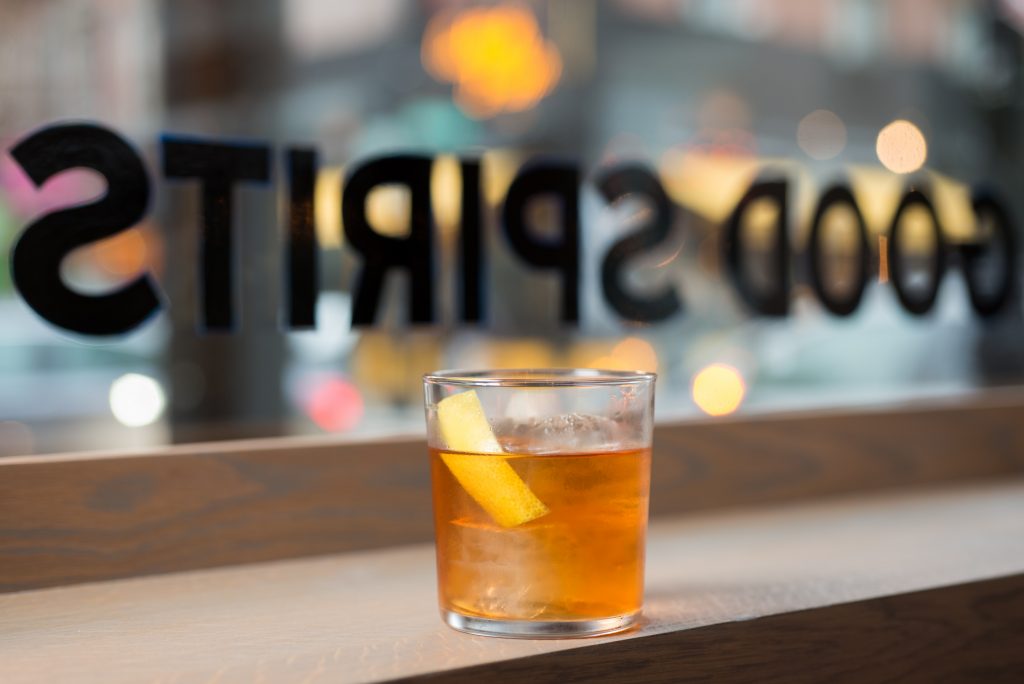
Aside from its location, what makes this a quintessential LES bar?
DR: One thing that I think makes the LES stand out over so many other neighborhoods is the continued proliferation of independently owned businesses. While there’s no Paul’s Boutique, and Lou Reed would find a hard time recognizing his old block, and the leather shops and textile wholesalers aren’t around as much anymore, this is still a neighborhood filled with independently owned businesses, small galleries, and unique fashion designers. We have strong relationships with our neighbors, and art and music plays a big part in rounding out our space.

Can you talk to me about the approach behind the beer menu?
Ryan Gleason: My approach to any beer menu is to offer something for everyone. With 20 tap lines, it’s difficult for someone not to find something either they recognize, or be introduced to a new example of a beer they previously enjoyed. There are a lot of New York beers on tap at the moment, but that’s less favoritism than it is a nod to the re-emergence of New York’s brewery scene.
What is really special and unique is our reserve list—mostly large format bottles that are often small-batch productions, rarely offered outside of super beer-forward places. A personal favorite standout is the Deus Brut des Flandres a champagne yeast-brewed Belgian Ale. I also think we’re the only bar in the neighborhood offering three different size pours on every beer, for those looking to taste a range of beers to those in the mood for a pint.
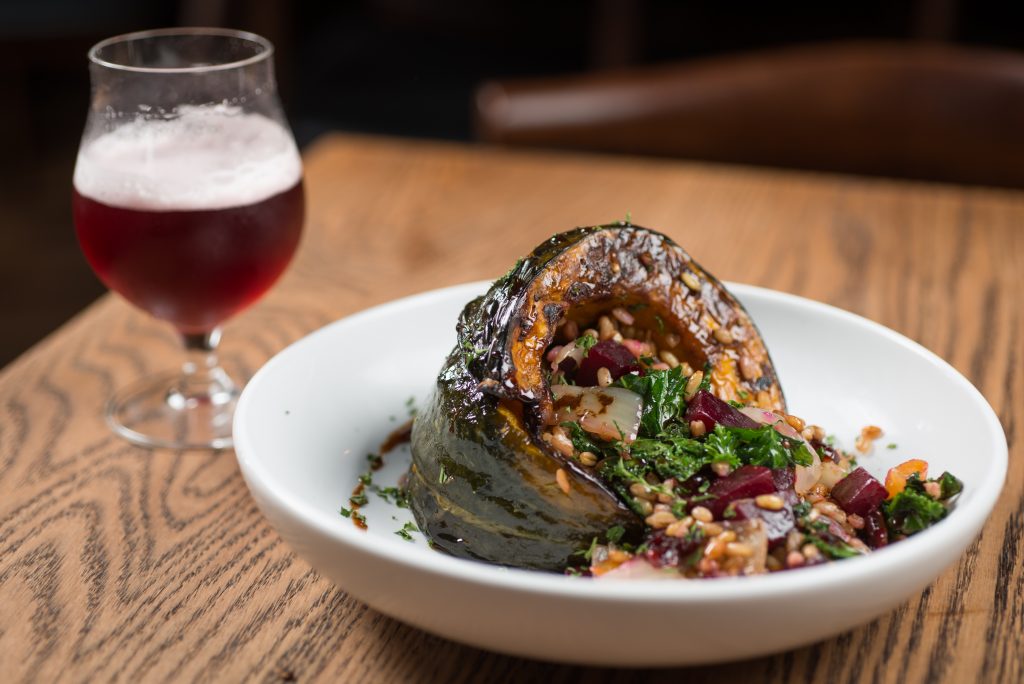
Ryan, can you tell me about your own beer? And its place on the menu, too?
RG: I’m excited by this. It couldn’t have come together at a harder time—opening a restaurant and launching a beer all at once is far from ideal, but I’m really happy with the first run we’ve done. The label is Villains Brewing, and for right now, we’re only distributing to our bars as a test run on its appeal. This first beer is a juicy, hazy IPA brewed with citra, columbus, and mosaic hops so it has a lot of depth and character. At 6.7% abv, it sits in that sweet middle ground of your everyday drinking IPA, although the IBUs are quite low comparatively. We’ll throw it on the menu and see how it goes. We’re not going out of our way to push the brand—we want honest, organic growth for now.

As for the food menu, it’s certainly more upscale than typical bar food. What led you in that direction?
RG: What defines “typical bar food” today? New Yorkers are so discerning, and by and large educated on what they’re consuming, that it’s only fitting we offer a food menu that’s as thoughtful as our drinks. Simplicity and seasonality are always a consideration—Kabocha squash came in to season as we worked on our opening, so it was a no brainer for us. We also find ways to make ourselves, and hopefully our customers, smile. We took duck fat and shaped it into a candle, plating it with grilled sourdough; the dish is meant to be shared and, as the candle melts, the duck fat pools over the plate, ready to be soaked up. Some items also play to our strengths, and our desires. Our partner and chef Jeremy Spector can’t help but cook a fantastic burger every restaurant he opens, and both his smoked wings and roasted oysters are ridiculously morish.
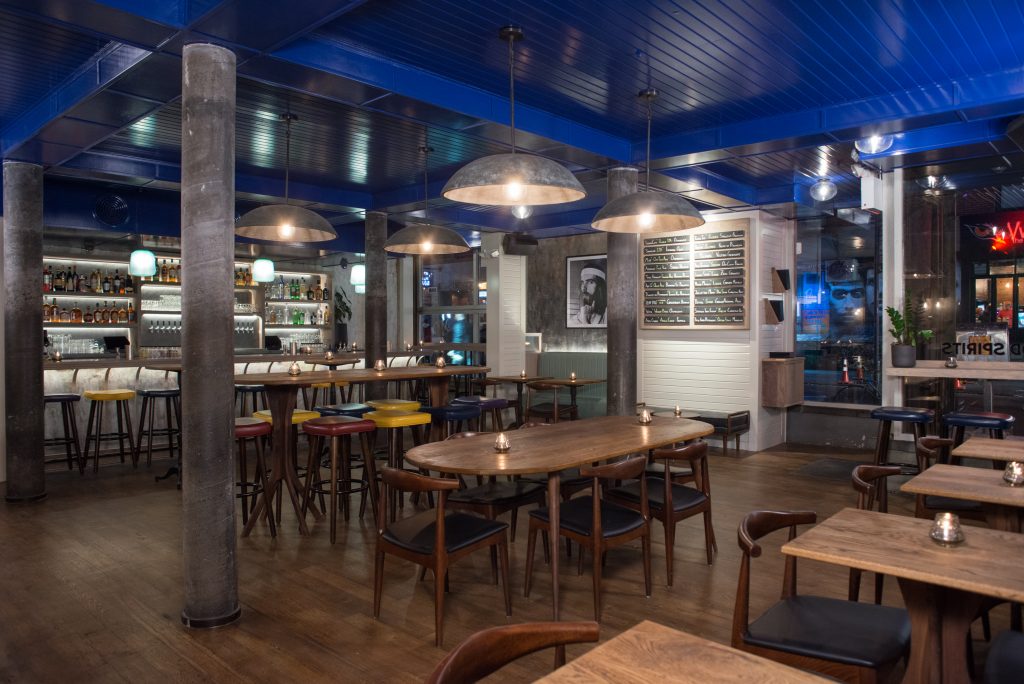
You’ve got a lot of space. Can you talk about how you plan to activate all parts of this footprint?
RG: We intentionally styled the front and back bars differently. While there are elements to tie them together—the brushed concrete bar top, royal blue ceiling, and curved back bars—the front room is more open plan, with booths marking the perimeter, facing out on to expansive communal high tops. The back room has a slightly more intimate, living room feel, replete with armchairs situated around lounge tables, and a fantastic marigold banquet recessed into its own nook.
We’ve already seen that people gravitate to different parts of the bar based on the occasion of their visit, but having the back room also allows us to get creative with activations. We will lean in to our strong beer program, with regularly organized beer club tastings and educational experiences. We’re also quietly in talks with chef friends and partners to do smaller, more intimate and eclectic dinner series. Not to mention, a private room of this size, with its own bar, in this neighborhood lends itself to hosting celebratory occasions.
Images courtesy of Pretty Ricky’s
